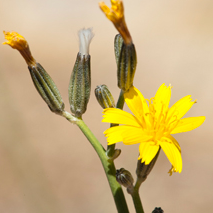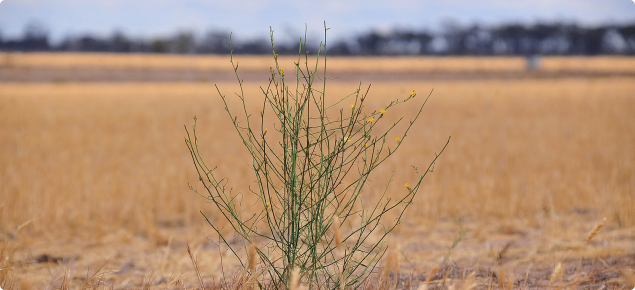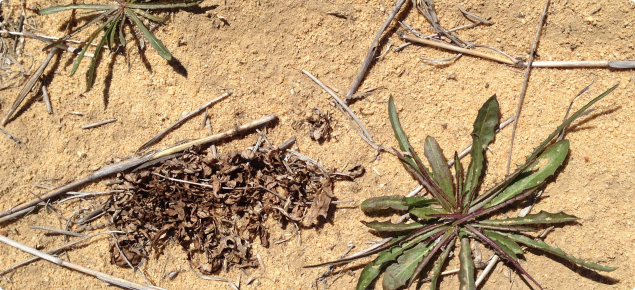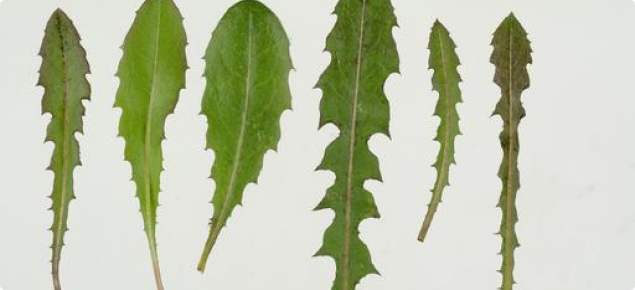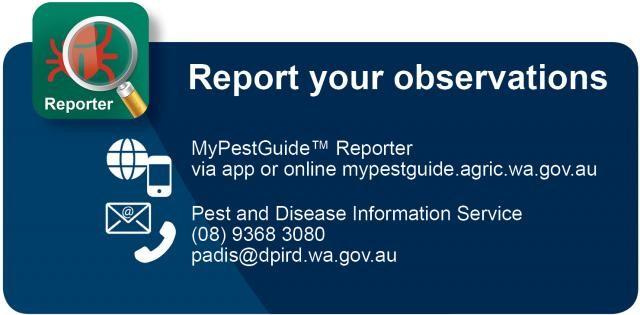Background and funding
Program strategies
- Improve landholders’ ability to find and eradicate skeleton weed.
- Increase landholders’ awareness of skeleton weed as a highly undesirable weed.
- Widely publicise descriptions and pictures of skeleton weed to help landholders identify infestations.
- Inform landholders about the most up-to-date techniques available for the management and eradication of skeleton weed.
- Provide assistance with searching and eradication.
- Encourage local grower groups (Local Action Groups) to participate in cooperative surveillance and reporting of infestations.
- Encourage Local Action Groups to assist in the management and eradication of skeleton weed in their local areas.
- Implement practical compliance regimes in affected areas.
- Provide landholders with incentives to report infestations.
- Provision of winter control treatments where landholders are compliant with program requirements.
Summer searching and surveillance
The Skeleton Weed Program undertakes annual summer surveillance of paddocks with high chances of having skeleton weed.
DPIRD has been carrying out a targeted surveillance program since 2002 with the objective to find infestations in areas considered a high risk of having skeleton weed. This program also raises awareness of the presence of skeleton weed on high risk properties. It occurs on non-infested properties between December and March in grain growing areas.
Properties chosen for surveillance are considered to have a high probability of having skeleton weed, due to being near or adjacent to a current skeleton weed infested property. Other properties are identified from analysis of current infestation locations, and predictions of spread from these locations.
Surveillance involves checking a minimum of three paddocks over summer (preferably crop stubbles) on each selected property. The aim is to search up to 300 hectares per property.
Landholders or managers will be contacted via phone and correspondence to advise of impending scheduled surveillance and confirm which properties can be searched. Paddocks should be livestock-free and unsprayed for four weeks, and allow 5-10 days before Departmental searching of harvested paddocks; this will allow skeleton weed to grow above the stubble.
Ongoing monitoring
In addition to the surveillance program, all landholders in grain growing areas are encouraged to undertake their own monitoring for skeleton weed, as part of their farm biosecurity measures, using recommended search protocols as outlined in the Skeleton weed in Western Australia: Management Guide see the right hand side of this page.
Reporting and identification
Regular communication with your local DPIRD office, skeleton weed Local Action Group and your neighbours is integral to achieving skeleton weed eradication on your property. There are a number of resources available to assist in helping identify or manage skeleton weed, which are outlined in the Skeleton weed in Western Australia: Management Guide see the right hand side of this page.
Biosecurity Officers and Local Action Group Coordinators
DPIRD has a dedicated team of program-funded staff to provide support to land managers, undertaking operations in both rural and metropolitan locations. Your local Biosecurity Officer will guide you through the process to both identify and manage skeleton weed on your property, once finds are reported.
In addition, a skeleton weed Local Action Group (LAG) is a network of local farmers in a district affected by skeleton weed, each led by a LAG Coordinator. There are currently seven operational Local Action Groups in grain growing areas, designed to provide additional local support and in some cases work in collaboration with Biosecurity Officers. Contact details for both regional DPIRD and LAG offices are listed below.
Regional reports - please contact your nearest DPIRD or LAG office.
| DPIRD office locations | Phone |
|---|---|
| Albany | 08 9892 8444 |
| Bunbury | 08 9780 6100 |
| Esperance | 08 9083 1111 |
| Geraldton | 08 9956 8555 |
| Merredin | 08 9081 3111 |
| Moora | 08 9651 0555 |
| Narembeen | 08 9064 7131 |
| Narrogin | 08 9881 0222 |
| Northam | 08 9690 2000 |
| Local Action Group | Phone |
|---|---|
| Avon South LAG | 0436 426 836 |
| Central Wheatbelt LAG | 0488 169 670 |
| Lakes LAG | 0409 351 373 |
| Lower Lockhart LAG | 0438 892 460 |
| Mortlock LAG | 0427 291 705 |
| Narembeen LAG | 0477 820 803 |
| Yilgarn LAG | 0477 964 891 |
Metropolitan reports - use the below options
Further details
Further details about the Skeleton Weed Program can be found in the Skeleton weed in Western Australia Management Guide see right hand side of this page or email SkeletonWeedProgram@dpird.wa.gov.au.

